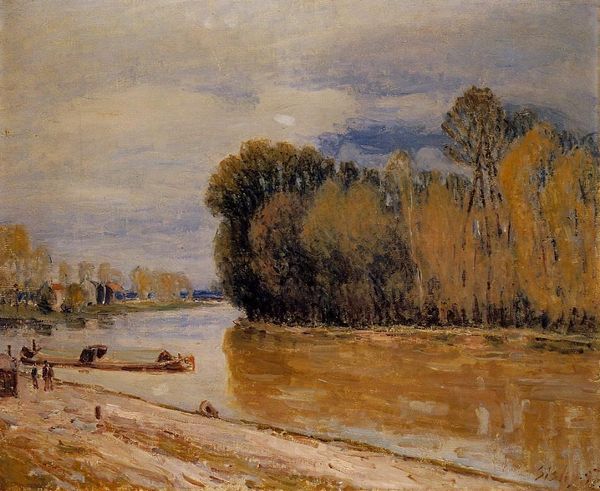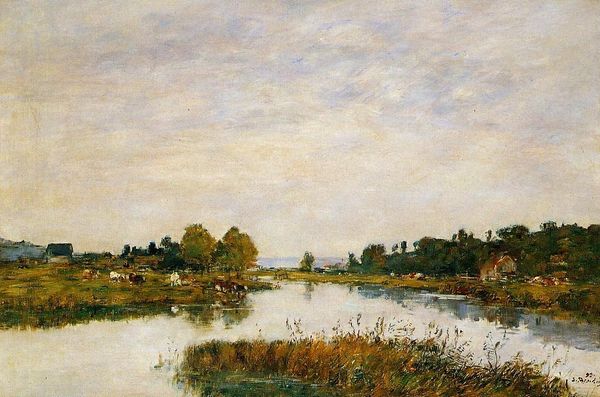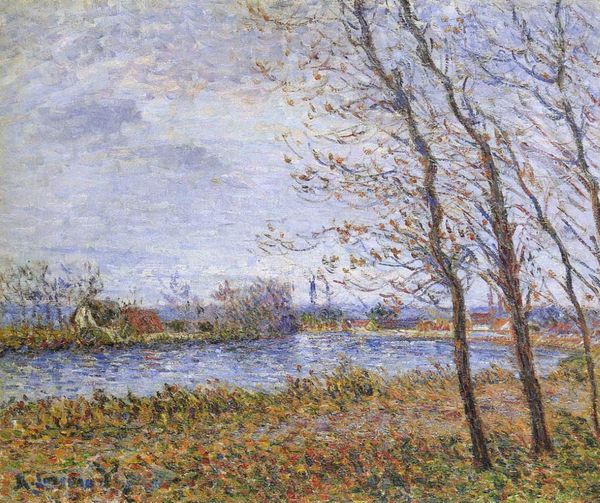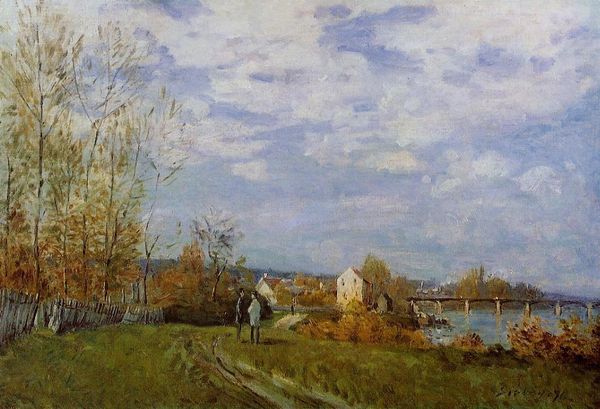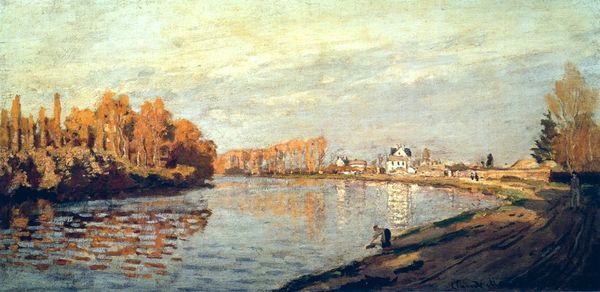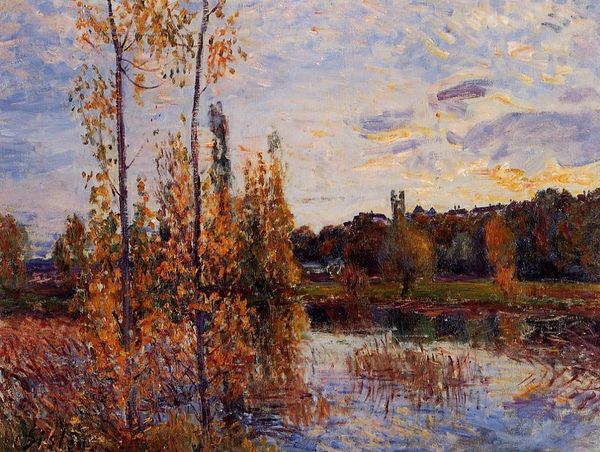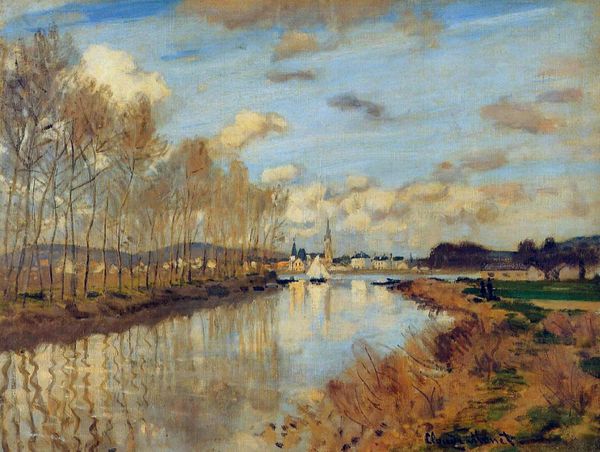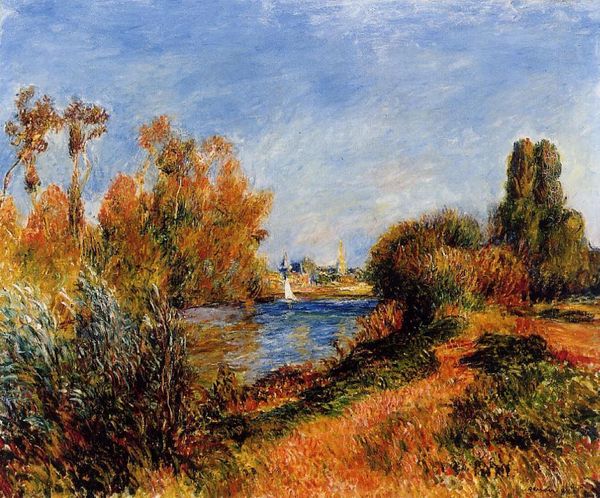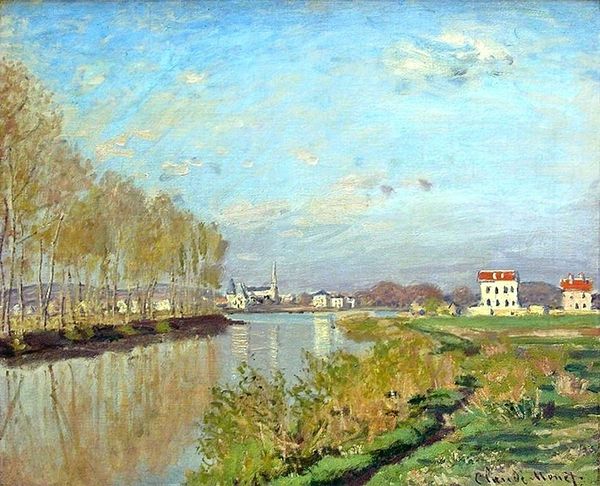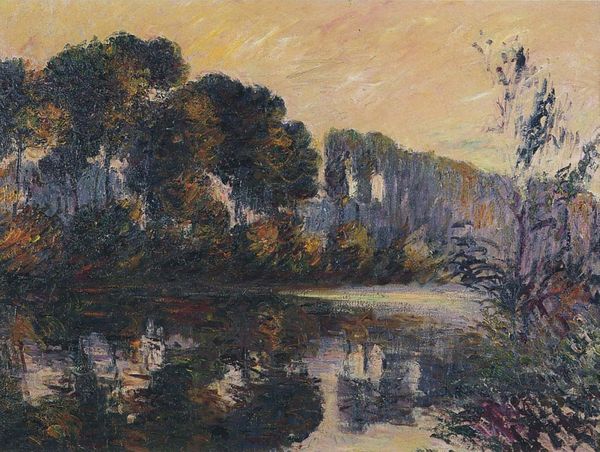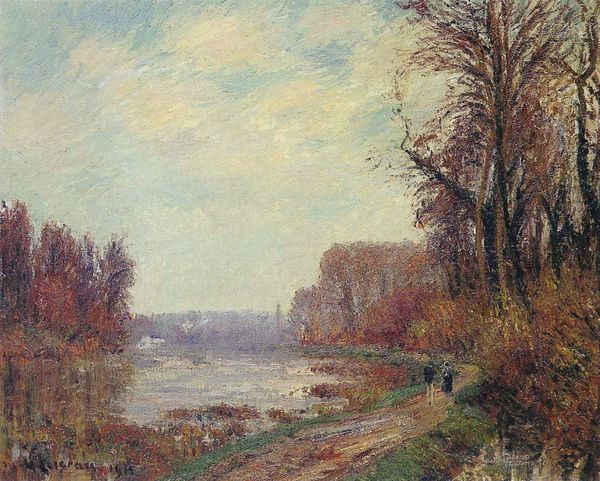
Autumn Banks of the Seine near Bougival 1873
0:00
0:00
alfredsisley
Montreal Museum of Fine Arts (MMFA), Montreal, Canada
#
tree
#
abstract expressionism
#
sky
#
abstract painting
#
countryside
#
landscape
#
waterfall
#
river
#
impressionist landscape
#
nature
#
fluid art
#
forest
#
seascape
#
natural-landscape
#
nature environment
#
coastline landscape
#
water
#
natural environment
Dimensions: 46 x 61 cm
Copyright: Public domain
Editor: This is "Autumn Banks of the Seine near Bougival," painted by Alfred Sisley in 1873. Looking at the water reflecting those golden trees, I feel this overwhelming sense of quiet. What do you see in this piece? Curator: I see a visual commentary on the relationship between industrialization and the pastoral. Note the presence of the figures and boat along the river. This isn't just a picturesque scene; it's a scene of labor, of people interacting with a landscape increasingly impacted by societal and economic forces. How does this image challenge or reinforce ideas about the role of nature versus human presence in late 19th century France? Editor: I hadn’t thought about that. It felt very...natural. But now I see that the figures, though small, are definitely part of the composition, maybe even essential to it. Is Sisley making a statement? Curator: Perhaps. Impressionism wasn't just about capturing light; it was also about documenting the changing social landscape. The Seine, both a source of beauty and a route for commerce, becomes a stage for understanding that interplay. The question then becomes: how are we implicated in this shifting dynamic between nature, labor and progress? Consider that France had only recently lost the Franco-Prussian war. Editor: So the painting isn't just pretty; it's provocative. Curator: Exactly. Sisley’s "Autumn Banks of the Seine" gives us beauty, yes, but also a space to reflect critically on the narratives embedded in our environment, then and now. What do you think you'll remember most about this artwork? Editor: Definitely that art isn't created in a vacuum, and that it's crucial to consider context to truly understand its layers. Curator: I'm glad to hear that; considering art’s historical and cultural intersections makes us more empathetic, critically engaged viewers.
Comments
No comments
Be the first to comment and join the conversation on the ultimate creative platform.
